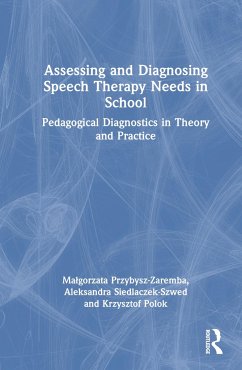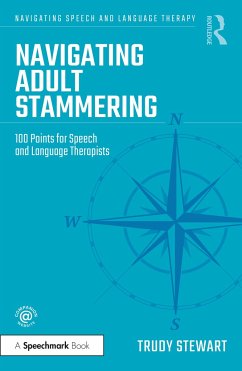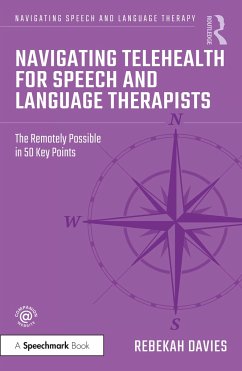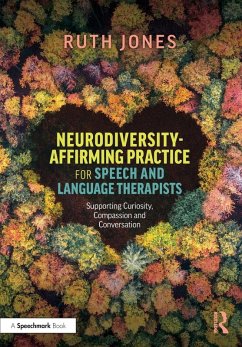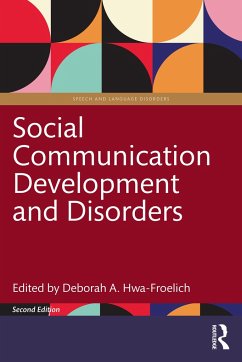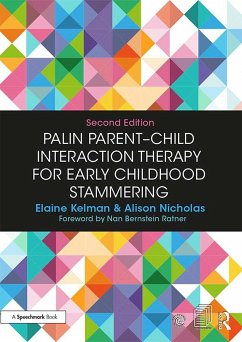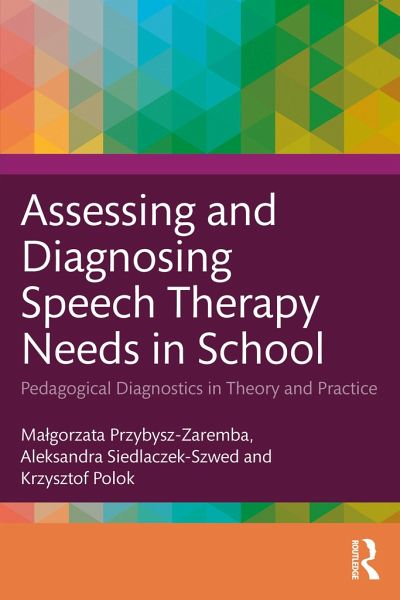
Assessing and Diagnosing Speech Therapy Needs in School
Pedagogical Diagnostics in Theory and Practice
Versandkostenfrei!
Versandfertig in 6-10 Tagen
29,99 €
inkl. MwSt.
Weitere Ausgaben:

PAYBACK Punkte
15 °P sammeln!
Assessing and Diagnosing Speech Therapy Needs in School is a unique text that offers practical guidance in pedagogical diagnosis of speech and communication difficulties within educational settingsIt outlines theoretical assumptions of the diagnosis process and presents hands-on solutions for pedagogical and speech therapy. Underpinned by theoretical knowledge and written by experienced practitioners, the book equips its readers with tools to understand the diagnostic process and make accurate diagnoses based on each child's individual circumstances. It starts by clearly distinguishing between...
Assessing and Diagnosing Speech Therapy Needs in School is a unique text that offers practical guidance in pedagogical diagnosis of speech and communication difficulties within educational settings
It outlines theoretical assumptions of the diagnosis process and presents hands-on solutions for pedagogical and speech therapy. Underpinned by theoretical knowledge and written by experienced practitioners, the book equips its readers with tools to understand the diagnostic process and make accurate diagnoses based on each child's individual circumstances. It starts by clearly distinguishing between pedagogy and speech therapy and outlines issues and theoretical considerations in diagnosing these disorders. To contextualize the theorical observations, it goes on to present case studies, and touches upon crucial topics including readiness to start education, tendency toward aggressive behavior, aphasia and hearing loss. The authors also elaborate on a range of selected diagnostic tools to assess specific difficulties in speech and language therapy. Finally, a list of resources, including games and exercises that can target reading, writing and articulation skills to help children develop, are also featured in the book.
Highlighting the importance of practical and theoretical knowledge for those who work with children, this will be a valuable aid for teachers, special educators and speech and language therapists working within school settings. The book will also be of interest to students, teachers and trainee practitioners in the fields of speech therapy and special educational needs.
It outlines theoretical assumptions of the diagnosis process and presents hands-on solutions for pedagogical and speech therapy. Underpinned by theoretical knowledge and written by experienced practitioners, the book equips its readers with tools to understand the diagnostic process and make accurate diagnoses based on each child's individual circumstances. It starts by clearly distinguishing between pedagogy and speech therapy and outlines issues and theoretical considerations in diagnosing these disorders. To contextualize the theorical observations, it goes on to present case studies, and touches upon crucial topics including readiness to start education, tendency toward aggressive behavior, aphasia and hearing loss. The authors also elaborate on a range of selected diagnostic tools to assess specific difficulties in speech and language therapy. Finally, a list of resources, including games and exercises that can target reading, writing and articulation skills to help children develop, are also featured in the book.
Highlighting the importance of practical and theoretical knowledge for those who work with children, this will be a valuable aid for teachers, special educators and speech and language therapists working within school settings. The book will also be of interest to students, teachers and trainee practitioners in the fields of speech therapy and special educational needs.





